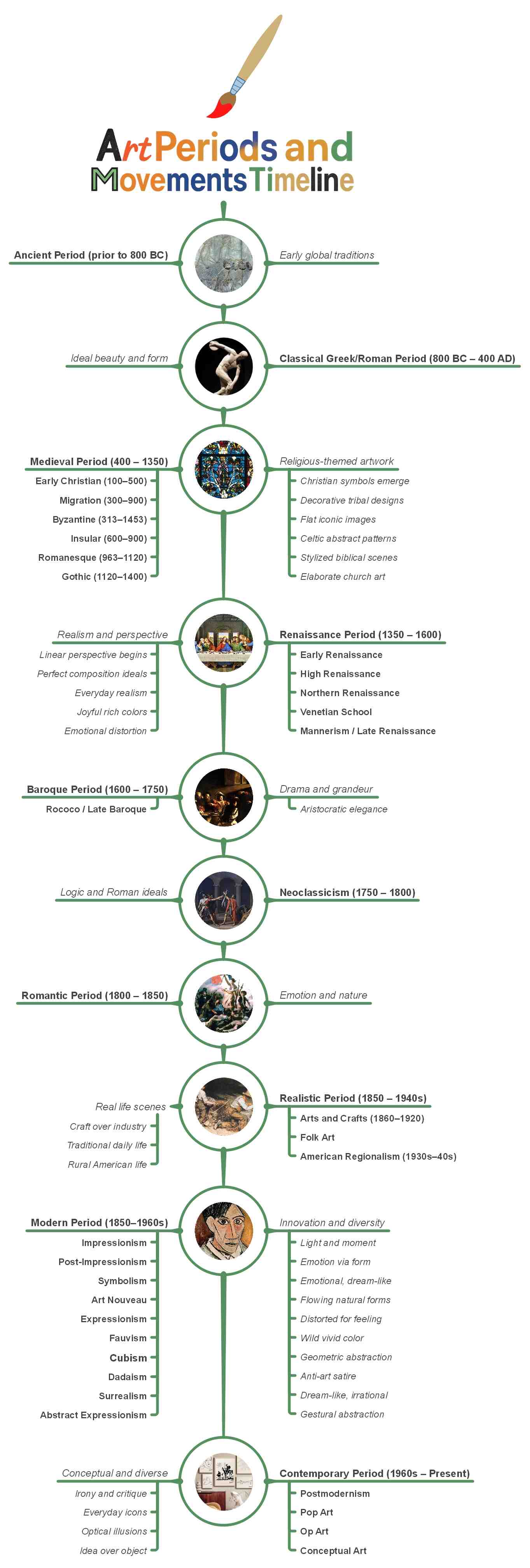The earliest records of art date back to prehistoric times, as evidenced by engravings on stone. Since then, art has transformed through the centuries, shifting from one subject to another ideal. Whether it's Romanticism’s love for nature or Baroque’s aristocratic art pieces, each era featured a distinct style and characteristics, reflecting the society of the time.
Having a basic knowledge of major developments in art history is essential. It does not matter whether you are an aspiring collector, a passionate student, or simply appreciate the work of influential artists. Here is a complete art movement timeline to help you trace art history.
In this article
Art Movements Timeline in Order
The earliest records of art date back to prehistoric times, as evidenced by engravings on stone. Since then, art has transformed through the centuries, shifting from one subject to another ideal. Whether it's Romanticism's love for nature or Baroque's aristocratic art pieces, each era featured a distinct style and characteristics, reflecting the society of the time.
Greek/Roman 800 BCE to 400 AD
Art history goes back to the prehistoric period, before any written records existed. The earliest art forms discovered include rock carvings, sculptures, and engravings. The caves of Lascaux, found in France, suggest that these humans used natural pigments and stone carvings to create objects and representations of animals that reflected their civilization.
By the end of prehistory, advanced civilizations such as Greece and Mesopotamia began recording their art. During this time, art forms mainly relied on the people’s religious beliefs, beauty, and symbolic imagery. It tells us stories, demonstrates social status, and depicts the rulers of the time.
-
Evidence: The Code of Hammurabi from ancient Mesopotamia, showcasing the King as a pious theocrat. It shows King Hammurabi, the sixth ruler of Babylonia, receiving laws from the god Shabash.
Religious Medieval 400 to 1350 AD
The medieval period is often referred to as the Dark Ages; it is primarily associated with the economic and cultural decline of the Roman Empire. The art of this time usually represents this darkness, frequently featuring brutal and grotesque scenes. It was also focused on the Church, as clergy formed the center of power during the Middle Ages.
Medieval religious art takes the form of paintings, tapestries, mosaics, and manuscripts. It is further divided into several phases.
- Early Christian art, spanning from 100 to 500 AD, uses Roman artists specializing in religious symbols.
- Migration art, from 300 to 900 AD, depicts the Germanic tribal settlements that followed the collapse of the Roman Empire. It typically displays weapons, decorative jewelry, and tools.
- Byzantine, 313 to 1453 AD, was centered on the absolute control of the Church. The art during this time mostly shows emotionless religious themes.
- The Insular Art period, also known as Celtic Medieval art, began around 600, featuring specialized abstract figures and geometric patterns.
- The Romanesque period, between 963 and 1120 AD, marked the beginning of a new era in Medieval art, characterized by optimistic symbols.
- The Gothic period, from 1120 to 1400 AD, marked the emergence of Gothic architecture. The artwork during this time was often a combination of straight lines in classic proportions, showcasing the Byzantine and Islamic concept of heaven.
Renaissance Period Art 1350 to 1600 AD
Renaissance art was a blend of paintings, decorative arts, and sculpture. It usually draws from the concept of individualism, seeing man as independent and self-sufficient. Renaissance art reached its peak in Italy during the 15th century, coinciding with the rise of economic challenges. Renaissance classic and realistic ideas were further extended into the following movements.
- The Early Renaissance spanned the period from approximately 1400 to 1490 AD. The art of the Early Renaissance offers a complete contrast to the Medieval Art. It was more realistic and centered toward individuals. The art also moved beyond religious scenes and included a wide range of subjects derived from society.
- The High Renaissance, spanning from 1490 to 1527 AD, produced some of the most renowned artists of the time, including Leonardo da Vinci, Raphael, and Michelangelo. Their work usually included emotional expression, characterized by realism, human anatomy, and attention to detail. You will also find a great deal of shading and light play in High Renaissance art.
- As Europe moved to the Northern Renaissance between 1430 and 1580 AD, the art was also influenced by Protestant ideas. This art was humble compared to other Renaissance art, with artists like Jan Van Eyck mostly depicting everyday life.
- The Venetian School, 1470 to 1580 AD, was an extension of the High Renaissance. However, the artists intentionally made the work colorful to represent joy.
- Late Renaissance, also known as Mannerism, is the late phase of the Renaissance art period, starting from 1530 to the early 1600s. The ideals of Raphael and Michelango inspired mannerist artists. They would use emotions and imagination to compose insatiable and distorted figures with unnatural colors.
Ornate Baroque
The Baroque period was characterized by over-the-top, ornate art and architecture. Popular artists of the Baroque era, such as Rubens, Van Dyck, Bernini, and Rembrandt, relied on rich color palettes, asymmetry, contrast, and symbolism to convey depth and drama. This time is also relevant to the Catholic Counter-Reformation, as the artwork became a strong push against Protestants.
-
Rococo (1702-1780 AD) is another more extravagant form of Baroque, originating in Paris. It encompasses a softer yet richer aesthetic, as seen in paintings, architecture, and decorative art. You will also see a lot of natural forms, brushwork, and asymmetrical colors in the Rococo art. The art itself was focused on the aristocratic lifestyle.
Logical Neoclassical 1750 to 1800
Neoclassical art derived ideas from the Classical Greeks and Romans. Artists saw the ruins of Athens and Naples as inspiration and tried to recreate them using elements of simplicity and proportions. The artwork was primarily focused on idealism and logic, which is seen in Antonio Canova’s marble sculptures.
Passionate Romantic 1800 to 1850
The roots of the passionate romantic art movement go back to the dislike of the neo-classical movement, the age of enlightenment, and the industrial revolution. These ideals rejected the harmony and rationality of neoclassicism and instead focused on passion, love for nature, and emotions. The artwork discovered encompasses various disciplines, ranging from paintings to music and literature.
Precise Realistic 1850 to 1940s
The Realism art movement started in France in the early 1850s, as a result of several events, including the rise of journalism, photography, and anti-romantic sentiments. All these ideals were depicted in everyday life through art. An influential realist artist, Gustave Courbet, painted only what he could physically see.
- The Arts and Crafts movement was primarily anti-industrial. It was inspired by social reforms and the idea that society can bring the required change. The artwork encompasses a wide range of art forms, including jewellery, paintings, interior design, and architecture.
- Folk Art might not be counted in traditional art movements, but it leaves a significant impression on society. It was rooted in cultural and utilitarian elements of the time. The artists of the folk art movement were those without a formal education.
- American Regionalism (1930s-1940s) is seen as an extension of traditional realism. It originated around the time the American Deep South and Midwest were suffering from the great depression. Hence, the artwork primarily revolves around urban economic issues.
Modern Art Period 1850 to 1960s
The modernist art movement in the timeline was founded on the progressive and idealistic aspirations. It focused on specialized techniques to represent reality in artwork. Unlike the previous period, the subject of art became limited during the modern period.
- Impressionism (1872-1892) was an art movement that focused on capturing the essence of the moment. It was derived from the subject's feelings and experiences on the spot. The artwork featured vibrant brushstrokes, lighting, and a bold color palette.
- The Post Impressionism movement (1886-1905) was a reaction to Impressionism. In contrast to the previous movement, it uses natural color and subtle light. The artists of the time were focused on creating art that could open the minds and souls of people
- Symbolism (1886-1910) art was about representing subjective ideas. The themes were not limited to the natural world. Dominant content of the artwork remained mystical, fear-based, and erotic.
- Art Nouveau (1890-1910) follows the Japanese Arts and Crafts movement. It focused primarily on nature and ornate elements. In the US, it was also called the Tiffany style.
- Expressionism (1905-1933), as the name suggests, was about expressing emotions through distorted reality. The artwork was mainly inspired by post-impressionists.
- Fauvism (1904-1910), as an art movement, was called Les Fauves (meaning wild beasts). Given this description, artists usually drew distorted images using unnatural colors.
- The cubism (1907-1922) period encompasses abstract art. It saw the subject from different angles and depicted it using random geometric shapes. Pablo Picasso was a renowned artist of the Cubist movement.
- Dadaism (1916-1924) primarily focused on creating art that was unpleasant and ironic. It provoked the middle class to ask hard questions about materialism and war. The movement originated as a response to capitalism and World War I.
- Surrealism (1924-1966) drew inspiration from the Dada movement, with artwork that was often illogical. The artists believed that their unconscious mind is not restricted by reason or ethics.
- Abstract expressionism (1943-1965) was also based on the idea that artists are influenced by their unconscious mind. It began in New York with rising leftist policies, mostly encompassing elements of anxiety and distress.
Contemporary Art Period 1960s to Current
The current art period is still ongoing, which is why it is referred to as contemporary or postmodern. Artists are also contested on a unanimous definition of what art is exactly, at this time. Despite this, here are a few major subdivisions of the contemporary art period.
- Postmodern (1970-present) art is a reaction to modernism. This art mostly features skepticism, philosophical critique, and satire on subject matter, which is primarily an objective reality.
- Pop Art (1955-1979) is the most recognizable in today’s age. The movement used everyday objects to produce something unique that challenges consumerism and mass media. Influential pop artists such as Andy Warhol and Roy Lichtenstein believe that art can be created from any source, without the interference of culture.
- The Op Art (Optical Art 1960s) movement was initiated with the launch of Le Mouvement at the Galerie Denise Rene. It is highly influenced by science and technology, particularly optical illusions. Artists of this decade used shapes and patterns to produce blurring and moving effects, often aided by contrasting colors.
- Conceptual Art (1960s) is different from any other art form mentioned before. It prioritizes ideas over visual elements and believes in performances. According to the movement, the skill, marketability, and aesthetics of the art are irrelevant. Hence, it also has no distinct form.
- Minimalism (1960s -1970s) began in New York with a group of young artists. They believed that art calls for the materiality of the work, rather than the parallels people draw with it.
How to Make a Similar Timeline Using EdrawMind?
Timelines are an excellent medium to inform your audience about something significant and complex without boring them. EdrawMind simplifies the process for you.
Step 1: Open a Blank Canvas
- Download and install EdrawMind desktop or use its online version
- Log in to your Wondershare account
- Click Create from the top left corner
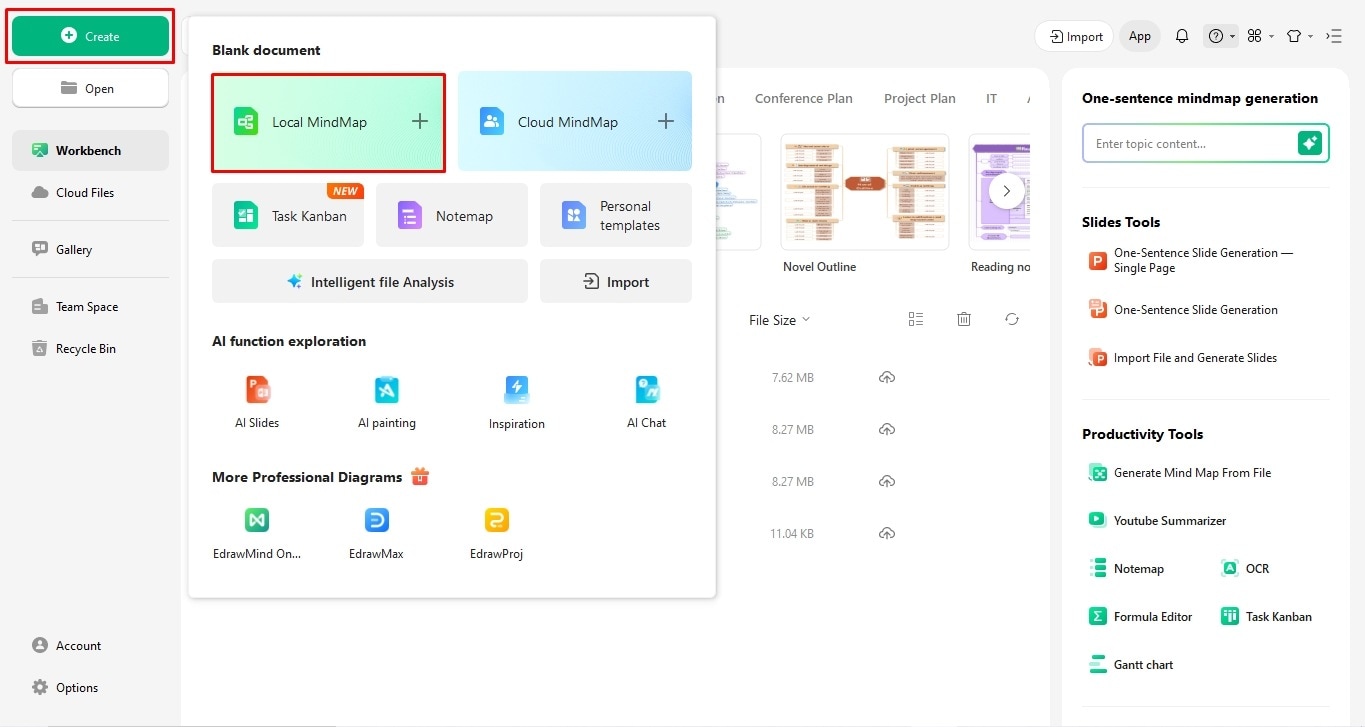
Step 2: Adjust the Layout
- Select the Main Idea box and click Layout
- Choose a desired layout (vertical, horizontal, or snake-like)
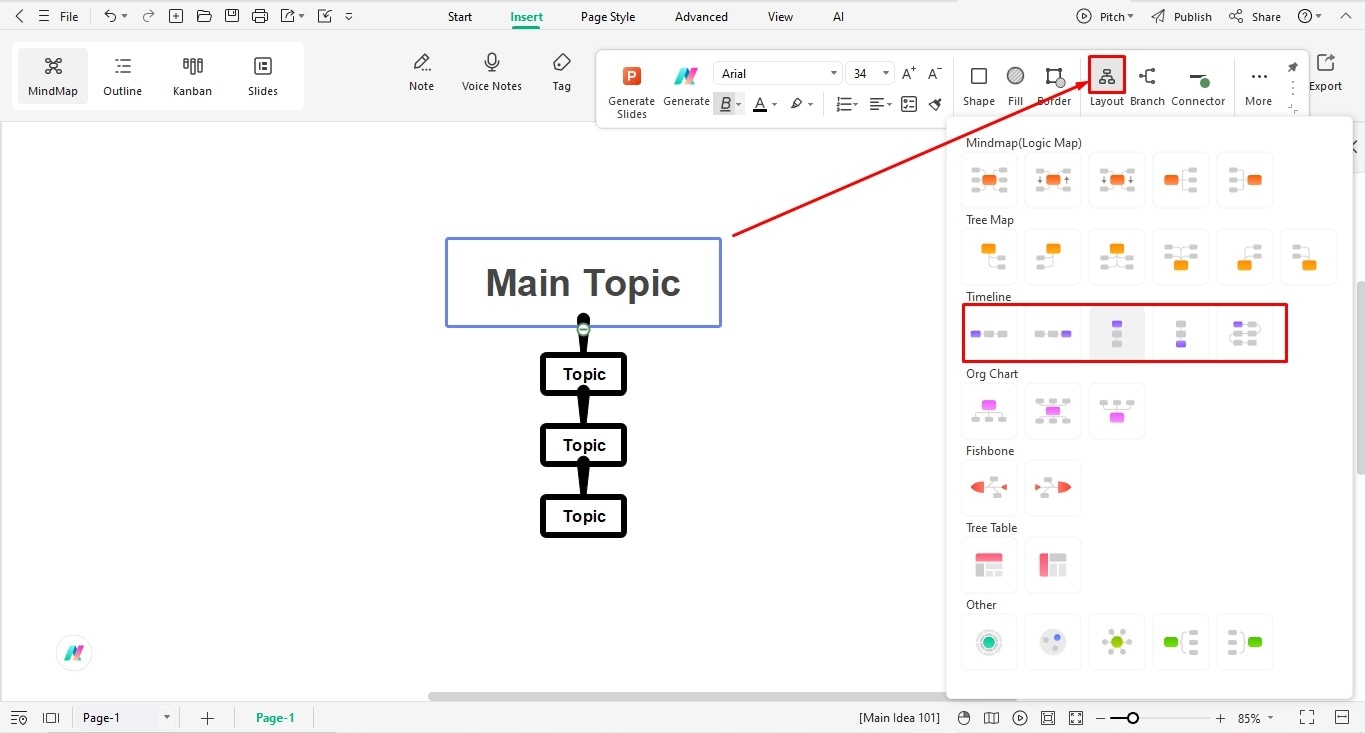
Step 3: Add Branches and Sub-Branches
- Count how many main events in your timeline
- Allocate Topic boxes for main events and Sub-Topics for descriptions
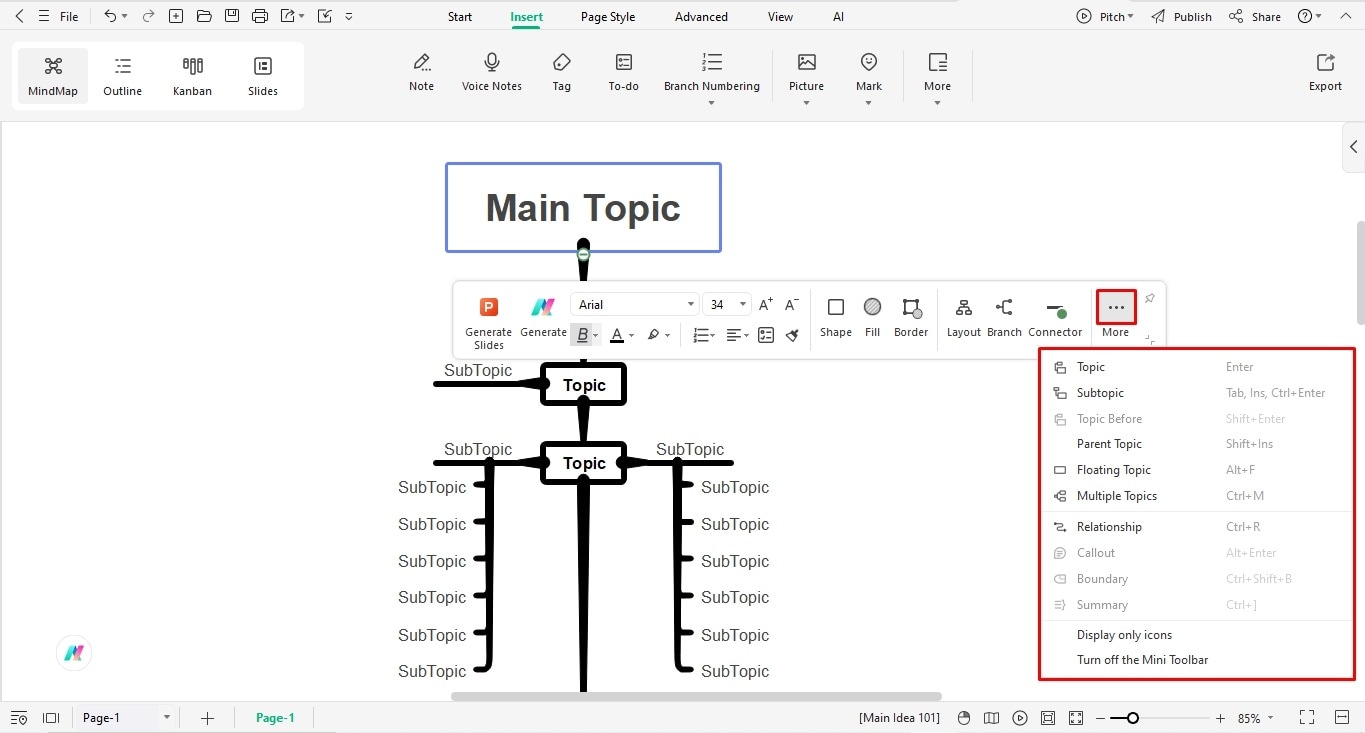
Step 4: Insert Event Title and Description
- Double-click any field to type your text
- Use the Edraw AI Generate button to shorten text or generate explanations
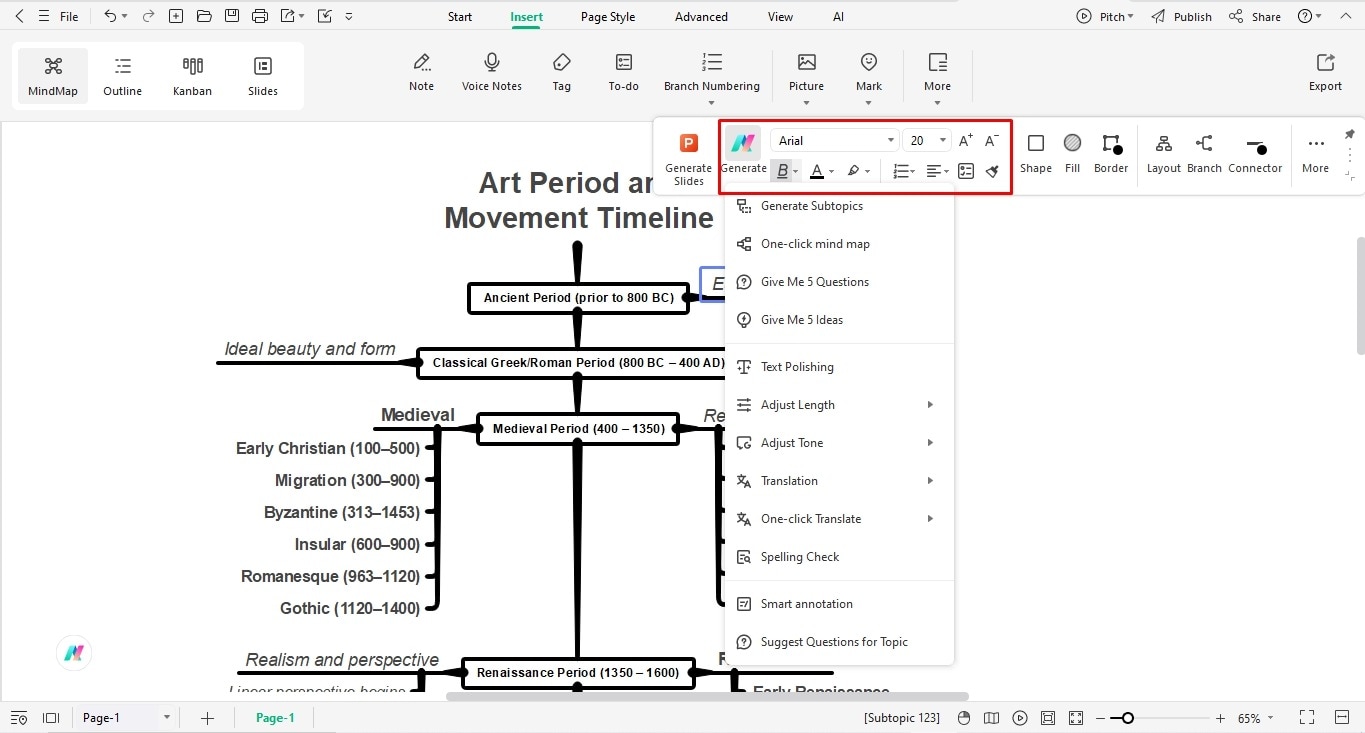
Bonus Step: Use Outline Mode
- Switch to Outline Mode from the top-left corner
- Observe data in a linear format and make changes
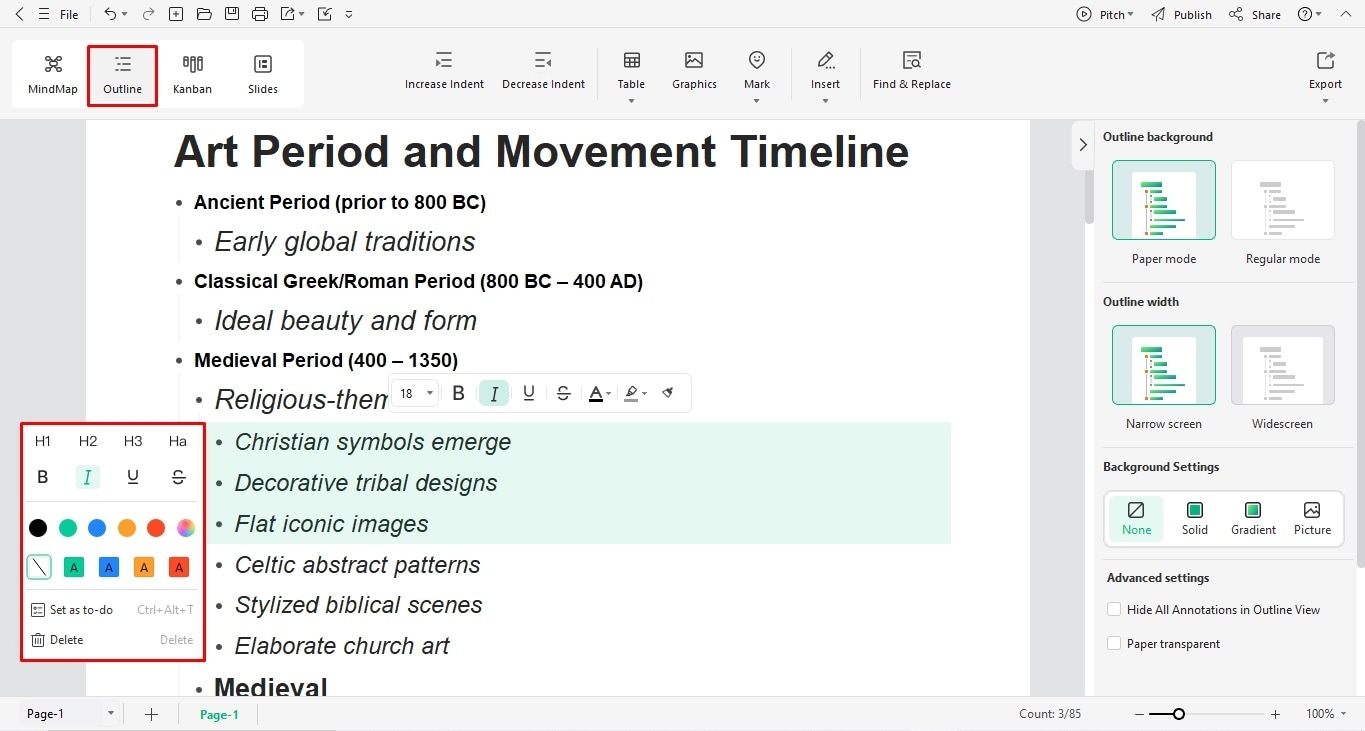
Step 5: Add Images
- Download images and add from the Insert tab
- Crop, rotate, and fine-tune usingthe floating menu
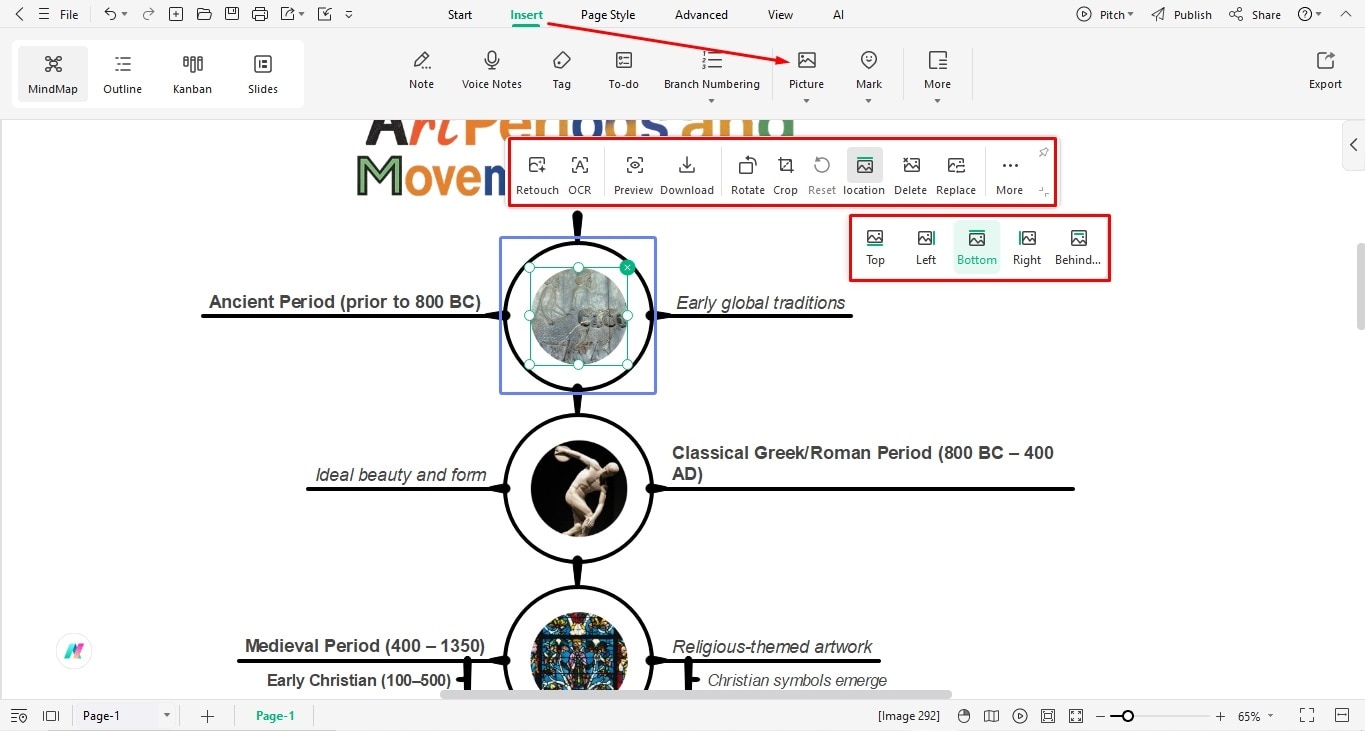
Step 6: Change the Theme
- Locate the Page Layout tab at the top
- Click Theme > Customize a Theme
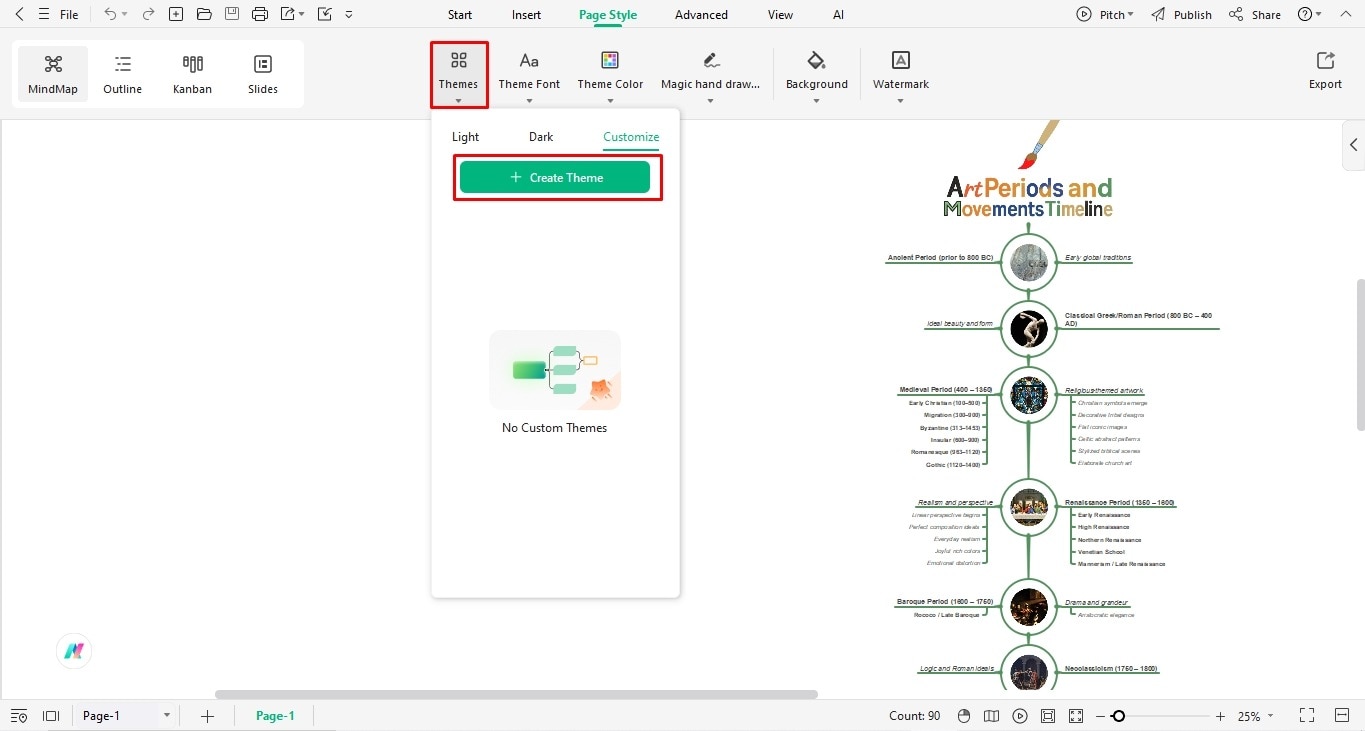
Step 7: Save or Download
- Click the Export icon and choose a format (PDF, PNG, etc)
- Or save in Emmx file for future edits
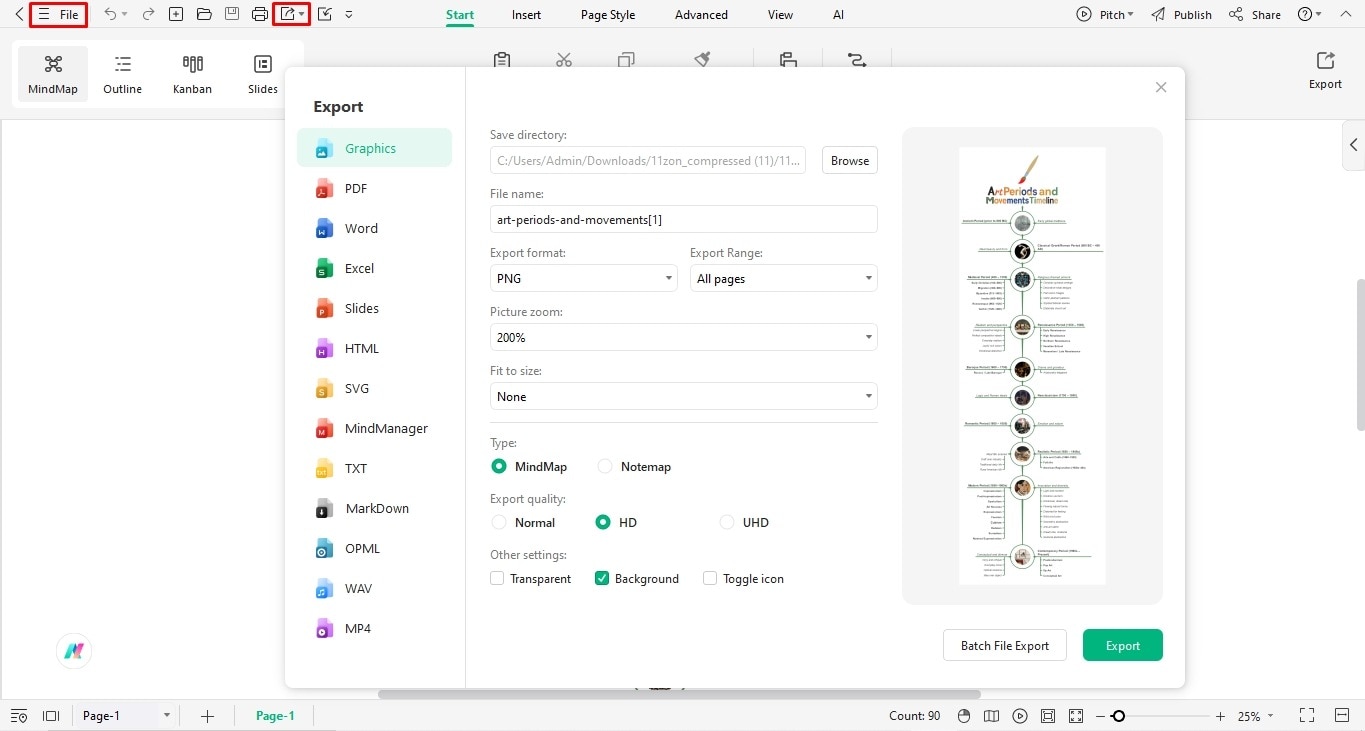
Conclusion
The art movements timeline illustrates how art pieces have evolved through the history of different civilizations, each with a unique social and political context. By recognizing these pieces from one another, we can learn more about societal dynamics.
Want to create a similar informational timeline? Try EdrawMind. Its preset structure and resourceful toolkit are designed with beginners in mind.



